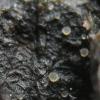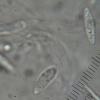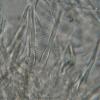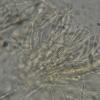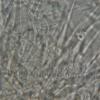
31-12-2025 19:27
Collected from loamy soil, at waterside (completel

30-12-2025 16:44
Pascal DucosBonjour,Une anamorphe rose stipitée, très nombre

30-12-2025 17:14
 Bernard CLESSE
Bernard CLESSE
Bonjour à toutes et tous,Pourriez-vous aider Albe

29-12-2025 10:15
Hulda Caroline HolteHello, I found and collected this propoloid ascom

30-12-2025 09:04
Hello.A Pyrenomycete sprouting sparsely but very d

29-12-2025 17:44
Isabelle CharissouBonjour,J'aimerais savoir si d'autres personnes au

12-11-2021 00:03
Lepista ZacariasHi everybody,A week ago in my fiels trip I noticed
Urceolella on Epilobium leaves
Marja Pennanen,
11-07-2015 16:54
once again Raitviirs study gave me no answer to my determination problem.
These are about 0,2 mm wide and grow on a Epolobium angustifolium leaf.
The spores are about 8-11x2-3 and contain some small droplets.
The asci are about 55-70x10-11 and seemed IKi negative.
The paraphyses are cylindric and about 2-3 wide.
The hairs are with basal lumen, about 20-40x4-5 and tapering.
Hopefully someone here has experience of this species or a newer key to the genera: Marja
Hans-Otto Baral,
11-07-2015 17:30

Re : Urceolella on Epilobium leaves
Do you have a photo of the asci too? What about KOH, does it remove the glassiness?
If it doesn't I recommend to hold a flame under the slide untl bubbles appear - to be sure.
Urceolella juniperi = conspicua has larger spores but similar ascus size.
Zotto
If it doesn't I recommend to hold a flame under the slide untl bubbles appear - to be sure.
Urceolella juniperi = conspicua has larger spores but similar ascus size.
Zotto
Marja Pennanen,
11-07-2015 17:40
Hans-Otto Baral,
12-07-2015 00:05

Re : Urceolella on Epilobium leaves
o.k., spores are indeed rather narrow compared to the wide asci even when dead.
And hairs seem to loose glassiness, so indeed Urceolella.
You need to find some more to make Seppo happy :-)
And hairs seem to loose glassiness, so indeed Urceolella.
You need to find some more to make Seppo happy :-)
Marja Pennanen,
12-07-2015 20:25
Re : Urceolella on Epilobium leaves
Thank you.
Ooh yes, should I find these more, would make Seppo happy. But trying to find them will not make me happy. These are from our country place and if I have not met them ealier, they must be uncommon.
Phialina species, Phialina pseudopuberula is the present determination, has been common on Epilobium leaves there for years. Seppo's allready got that. Then there is Mollisina propably M. rubi, that occurs on Epilobium, too.
This summer is a bit strange here, it has been raining a lot and there are only few days, when temperature has raised above 20 C.
So, many interesting species have had time to develop.
I'm a bit curious. Is there some connection between paraphyses and moisture? I have had serious difficulties to find paraphyses on many species and it surely has been moist here. Do they occur more when it is dry? Do they protect asci, when times are bad?
Marja
Ooh yes, should I find these more, would make Seppo happy. But trying to find them will not make me happy. These are from our country place and if I have not met them ealier, they must be uncommon.
Phialina species, Phialina pseudopuberula is the present determination, has been common on Epilobium leaves there for years. Seppo's allready got that. Then there is Mollisina propably M. rubi, that occurs on Epilobium, too.
This summer is a bit strange here, it has been raining a lot and there are only few days, when temperature has raised above 20 C.
So, many interesting species have had time to develop.
I'm a bit curious. Is there some connection between paraphyses and moisture? I have had serious difficulties to find paraphyses on many species and it surely has been moist here. Do they occur more when it is dry? Do they protect asci, when times are bad?
Marja



